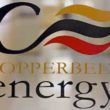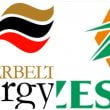THE Copperbelt Energy Corporation Plc (CEC) says it remains hopeful that a quick solution can be found for Konkola Copper Mines (KCM) to dismantle its outstanding US $150 million debt owed to the former to ease the heightened level of uncertainty.
And CEC says it is upbeat that increased copper prices on the international market, coupled with newly-available COVID-19 vaccines, will revitalise growth prospects in its regional markets in 2021 and beyond.
Meanwhile, CEC says the 2.1 US cents per share dividend, due to be paid to shareholders this month, was driven by a significantly reduced level of impairment losses expected by the end of the current financial year, which boosted profitability.
CEC chief financial officer Mutale Mukuka said the power utility remained hopeful that KCM would find a solution towards settling its outstanding US $150 million debt as the unpaid bill had triggered a heightened level of uncertainty for the business and its shareholders this year.
“Definitely, it’s the elephant in the room from a business perspective; we are sitting on a US $150 million, that’s even higher than the market capitalisation of the business on the Lusaka Stock Exchange! So, it’s a colossal sum of money that remains unpaid. What do we look forward to as a business? We definitely look forward to an amicable solution between the parties, with the team at KCM, and we will continue to explore any possible solution that results in a win-win type of solution for us,” Mukuka said in an interview in Lusaka.
“It’s definitely a big issue; it leaves our shareholders, our lenders, from a business perspective, it brings up the uncertainty that is better managed than left hanging. So, whereas there is no solution that has been put on the table, we hope in the near-term we can, as parties, find a quick solution to that debt.”
Asked if CEC was amenable to any instalment payment plan from KCM to take into account the mining company’s operational challenges, he said the utility would welcome the move.
“From a CEC perspective, we’re definitely amenable to any solution that works for all the parties on the table; whether the solution involves a direct payment, or it involves some form of structured debt swap with all the appropriate parties, whatever it is, if it’s a solution that works for us and works for KCM, works for the government as well, that’s what we would seek to achieve,” he replied.
And Mukuka expressed optimism that increased copper prices on the international market, coupled with newly-available COVID-19 vaccines, will revitalise growth prospects in its regional markets in 2021 and beyond.
In addition to supplying power to mining companies on the Copperbelt, CEC is aggressively increasing its market presence in the DRC as demand for power from mining units in that country grows.
Copper prices on the international market have surged beyond US $7,700 per metric tonne on the London Metal Exchange (LME), the highest since June, 2016, while COVID-19 vaccines are readily being made available in advanced economies to ease supply chain disruptions.
“At the moment, our current focus is that, with where the copper price is, and if anything is to go by with respect to some of the pronouncements around the vaccine for COVID-19, if we can get to some form of solution within Quarter 1 of next year, I definitely think that the opportunities can be actualised in that respect. We hope that with that, the need to address the social distance and the supply chain, there’ll be more travel and, thereby, allow for a lot more things to happen. And if the copper price can remain in the same range where we are, it definitely makes a lot more projects viable,” he said.
“With that, of course, any production of copper demands that any service provider who is providing a service, such as power, the consumption will be higher and it adds onto other service providers. So, we hope that that will be the case.”
Meanwhile, Mukuka disclosed that the 2.1 US cents per share dividend, due to be paid to shareholders on December 18, was driven by a significantly reduced level of impairment losses expected by the end of the current financial year, which boosted profitability.
“We have declared a dividend, which is marginally above what we declared last year at 2.1 US cents per share relative to 1.9 US cents per share last year. We published the half-year numbers, which showed that the business had posted a loss of about US $32 million up until half-year (2020). The business has sort of changed the structure; the bulk of that loss was driven by the payment default by KCM and from 1st October, we changed the structure: Zesco is now supplying KCM using our infrastructure,” said Mukuka.
“So, in terms of our credit exposure to KCM, it has significantly reduced, it has not gone away because they continue to use our infrastructure for them to be served. But we have no obligation to source power and provide it to them, which power they won’t be paying for. So, from that perspective, the level of impairment has significantly reduced, that’s what we anticipate for the last-half of the year. And we anticipate that the loss for the year will be significantly less than what we posted at half-year.”












